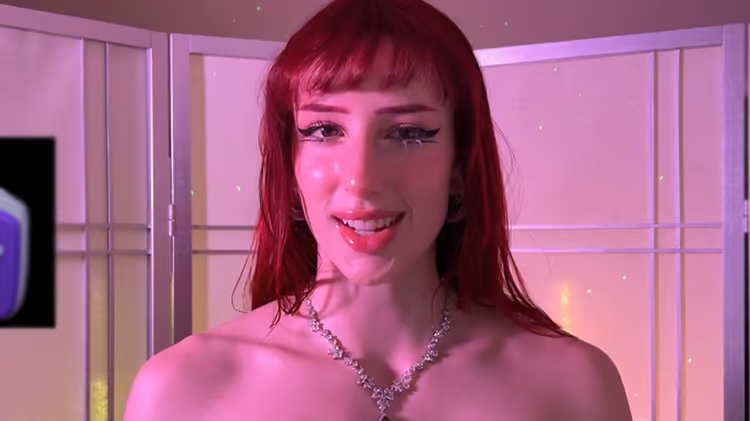The world of Twitch streaming is no stranger to controversy, and the latest trend has viewers scratching their heads in confusion. A new ‘topless’ meta has emerged, with streamers pushing the boundaries of the platform’s guidelines by appearing seemingly nude on camera. This has sparked debates about censorship, exploitation, and the evolving nature of online content.
The trend started with streamer and cosplayer Morgpie, who went viral on social media in early December for a clip where she appeared to be standing fully naked in front of the camera. While the camera strategically cut off any sensitive areas, the suggestive nature of the broadcast left many viewers feeling uncomfortable.
Morgpie is not alone in this new meta. Other streamers, primarily women, have adopted similar tactics, flirting with nudity while technically remaining within Twitch’s guidelines. This has led to accusations of exploiting the system for views and attention, with some arguing that it creates an unfair and exploitative environment for other streamers who choose to play by the rules.
One of the biggest concerns is that this “topless” meta could lead to further restrictions on content creators. Twitch has a history of cracking down on suggestive content, with the infamous “hot tub meta” of 2021 being a prime example. This has left many creators worried that they could be punished for simply trying to make a living on the platform.
The debate also raises questions about the nature of censorship online. Should platforms like Twitch have the right to dictate what streamers can and cannot wear? Or should creators be allowed to express themselves freely, even if it means pushing boundaries?
There are no easy answers to these questions. The “topless” meta is a complex issue with no clear-cut solutions. Ultimately, it is up to Twitch to decide how to handle this situation, but it is clear that they need to find a way to address the concerns of both viewers and creators.
Experts weigh in
Several experts have weighed in on the “topless” meta, offering diverse perspectives on the situation.
- Dr. Sarah Jones, media studies professor: “This trend highlights the ongoing tension between freedom of expression and the need to protect vulnerable users online. Twitch needs to strike a balance between allowing creators to express themselves creatively and ensuring that the platform remains safe and inclusive for everyone.”
- Mr. David Lee, Twitch streamer and content creator: “The ‘topless’ meta is a slippery slope. While I understand the desire to push boundaries and experiment, I worry that it could lead to further restrictions on content creators. We need to find a way to be creative and engaging without resorting to tactics that could harm the entire streaming community.”
- Ms. Maria Garcia, online safety advocate: “We need to be concerned about the potential for exploitation, particularly when it comes to young and vulnerable viewers. Twitch needs to implement more robust safeguards to protect users from inappropriate content and ensure that the platform is a safe and welcoming place for everyone.”
Looking ahead
The “topless” meta is still in its early stages, and it remains to be seen how it will evolve in the coming months. However, one thing is clear: it has sparked a much-needed conversation about the role of censorship online, the rights of content creators, and the responsibility of platforms like Twitch.
Only time will tell whether this trend will fade away or become a permanent fixture on the platform. However, one thing is certain: the “topless” meta has forced Twitch to confront some of the most pressing issues facing online content creators today.












